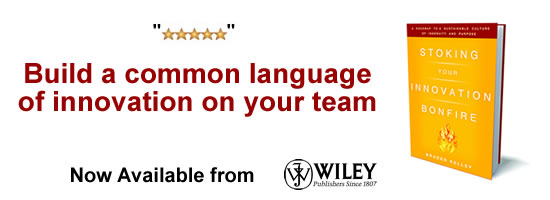Accelerating Innovation with Rapid Learning Cycles

As innovators, we all want to do three key things:
- Create something new, fantastic and disruptive
- Bring it to the market fast enough to capture its value and grow our business
- Do it again (and again, and again…)
But this is no easy thing, especially item 3, unless you take time to think about it and create a smooth path from idea to delivery. By contrast, structured, rapid innovation can be a repeatable process, and can disrupt your industry all on its own.
The Yamaha-Honda wars of the early-mid 1980s sharpen this point. Yamaha wanted to end Honda’s dominance of the motorcycle industry, so they built a huge production facility and announced they would increase volume and knock Honda down. Honda took a very different approach to the challenge. They used their superior R&D ability, launching something like 178 new motorcycles in the next 18 months, vs. a small fraction of that number by Yamaha.
The result was that the market moved. No customer wanted to buy the outdated technology and style offered by Yamaha. They wanted the new stuff offered by Honda.
But how do you get this innovation speed advantage over your competitors? You don’t make motorcycles (or cars, etc.), how can this apply?
It turns out, the methods of a good innovation cycle are no different from motorcycle companies than they are for architecture firms, software developers or device companies. It is small, rapid learning cycles to understand and solve critical problems, and deliberate integration of those cycles to ensure flawless operation of the final product.
How effective is this? At a printer manufacturer, we saw a reduction from 3 years for 3 new features, to 18 new features in less than 90 days. In pharmaceuticals, these approaches were able to cut time to market by 50%. If you are in a startup, imagine how this changes your cash burn/ROI calculations.
So, now that you are intrigued, where can you get some of this? You can boot strap it, by buying books on Lean Product Development – a terrific start is one by Allen Ward and Durward Sobek. You can hire a consultant, but picking a competent one is spectacularly difficult, and even if you get one, they cost real money.
But if you want to go more quickly and save some cash, there is a conference that can both teach you critical steps, and introduce you to dozens of people who are doing exactly what you are attempting. Some in your field, some in completely unrelated fields, even people who are using it to improve rocket science at NASA and Roscosmos (the Russian space agency).
Lean Product and Process Development Exchange (LPPDE)Â Accelerating Innovation conference is being held this year in San Jose, CA the heart of innovation country.
Come join us, learn some new tricks, share some of your own, and trounce any of your competitors who fail to show.
Wait! Before you go…
Choose how you want the latest innovation content delivered to you:
- Daily — RSS Feed — Email — Twitter — Facebook — Linkedin Today
- Weekly — Email Newsletter — Free Magazine — Linkedin Group
 Terry Barnhart is the author of Creating a Lean R&D System, and the Head of Process and Cultural Excellence at Sandoz, Inc. He has been accelerating innovation pharmaceutical and device R&D space for over a decade, slashing early development time and cost, and helping bring new treatments to market years ahead of plan.
Terry Barnhart is the author of Creating a Lean R&D System, and the Head of Process and Cultural Excellence at Sandoz, Inc. He has been accelerating innovation pharmaceutical and device R&D space for over a decade, slashing early development time and cost, and helping bring new treatments to market years ahead of plan.
Terry is currently the Chairman of Lean Product and Process Development Exchange (LPPDE) Accelerating Innovation conference, September 18-21 at the San Jose Marriott and San Jose Convention Center in California. Sign up here while there is still time.Â
NEVER MISS ANOTHER NEWSLETTER!
LATEST BLOGS
Credit Card Shenanigans
It must be great to be in the credit card business in the United States. Demand is relatively inelastic and regulation is lax, so you can charge whatever you want for an interest rate, increase your fees once or twice a year, and make additional money off cash withdrawals and foreign exchange transactions.
Read MoreBuilding an Experience
As people become ever more immune to traditional advertising and marketing, branding will become more important. Branding is all about building an emotional connection with customers. Making the decision to follow a strategy focused on building a brand is not without peril, however, as it means that you will have to choose to not do certain things, like pursue a low price strategy.
Read More- « Previous
- 1
- …
- 4,132
- 4,133
- 4,134




